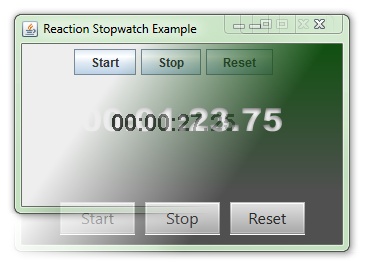Zynaptic Reaction Beta 4 Released
Posted : 03-04-2013
The latest release of the Reaction asynchronous programming framework is now available for download. It adds a bit of spit and polish to the previous release, including a new example of JavaFX 2 integration.
The latest release of the Reaction asynchronous programming framework includes an assortment of minor changes which we have found to improve the experience of using it in practical applications. These changes are mostly small enhancements of the public API in order to improve programming convenience. However, there are two changes related to runtime logging and GUI integration which are worth highlighting here.
The most significant change is the way in which runtime logging is supported. With the previous implementation, logging support for the Reaction framework was private to the Reaction module. This meant that any application client modules had to manage their own logging support independently. However, our experience has been that when writing application code we typically want to use the same logging configuration as the Reaction core. In order to support this mode of operation, the Reaction framework now provides a public runtime logging interface for use by application client modules.

The second change does not affect the main Reaction framework, but is an addition to the supplied set of examples. The new example code demonstrates the use of the Reaction framework in conjunction with the JavaFX 2 GUI toolkit, using exactly the same underlying MVC model as the existing Swing example. JavaFX 2 represents a huge step forward when it comes to implementing application user interfaces in Java. Its original roots as an Adobe Flash style multimedia platform mean that it has a level of flexibility which cannot be matched by traditional WIMP based GUI toolkits. Needless to say, we will now be using JavaFX 2 as the basis for all our application user interface development.
The sourcecode and documentation for the new beta release of the Reaction framework may be found on the Reaction section of this website.
